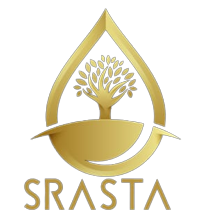SAVE RIVERS: POLLUTION, LACK OF FUNDING, RESISTANCE
Lack of awareness and education about the impacts of river pollution. Limited enforcement of regulations and policies to prevent pollution. Insufficient investment in river restoration projects and maintenance. Conflicts of interest between different stakeholders, such as agriculture and industry, that use river water.
AIR POLLUTION: RESISTANCE, WEAK REGULATIONS FUNDING
Dependence on fossil fuels in transportation, industry, and energy production. Lack of regulatory enforcement for industrial emissions. Inadequate public transportation infrastructure and limited adoption of electric vehicles. Challenges in transitioning to cleaner energy sources due to the high cost and limited availability of alternative technologies.
RENEWABLE ENERGY: HIGH COSTS, LACK OF INFRASTRUCTURE
Limited availability of sustainable materials for production and installation. Inefficient recycling and disposal of components, leading to waste and pollution. Inconsistent policies and incentives for renewable energy development and adoption. Limited research and development for improving the efficiency and reducing the environmental impact of renewable energy systems.
BIOGAS: LIMITED FEEDSTOCKS, HIGH COSTS, EMISSIONS
Challenges in finding suitable feedstocks that do not compete with food production. Limited investment in waste management infrastructure and facilities. Difficulties in reducing methane emissions, which is a potent greenhouse gas. Limited public awareness and education about the benefits and challenges of biogas production.
GLOBAL WARMING: RESISTANCE, WEAK POLICIES, COORDINATION
Resistance to policy changes and regulation to reduce greenhouse gas emissions. Dependence on fossil fuels in transportation and energy production. Limited adoption of renewable energy due to high costs and limited availability. Challenges in reducing carbon emissions from agriculture and land use practices.
INDIAN CULTURE AWARENESS PROGRAME
Religion: Religious conflicts and tensions often arise due to differences in beliefs and practices.
Food: Food safety and hygiene can be a challenge in some areas, and traditional culinary knowledge may be at risk of being lost.
Arts and crafts: Cheap imitations of traditional handicrafts are flooding the market, threatening the livelihoods of artisans and diluting the authenticity of the art.
Music and dance: Traditional art forms are struggling to stay relevant in a fast-changing cultural landscape, and lack of support and funding can pose a challenge.
Language: Language barriers can create communication problems and hinder access to education and opportunities for non-native speakers. Additionally, some minority languages are at risk of being lost due to lack of support and recognition.
